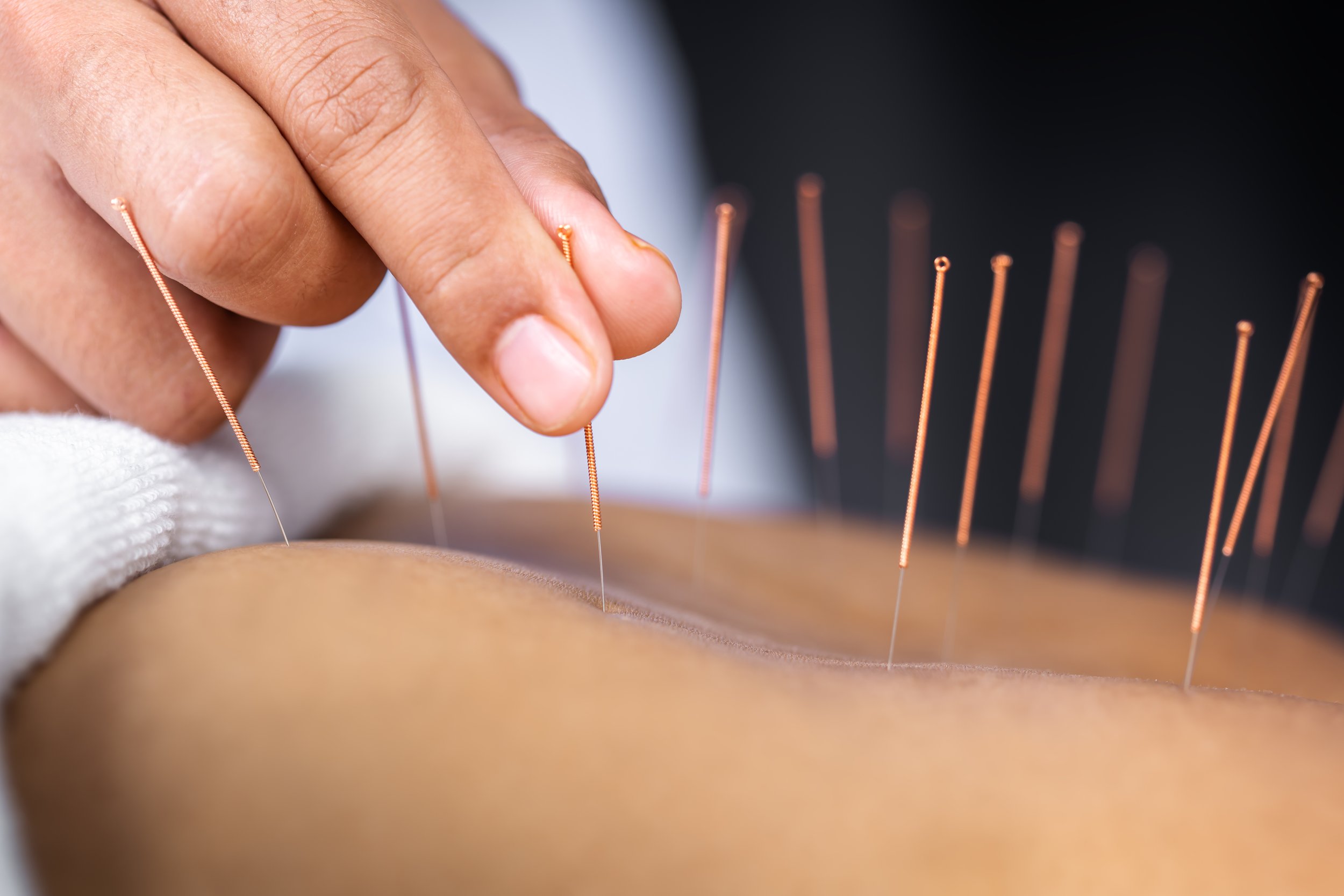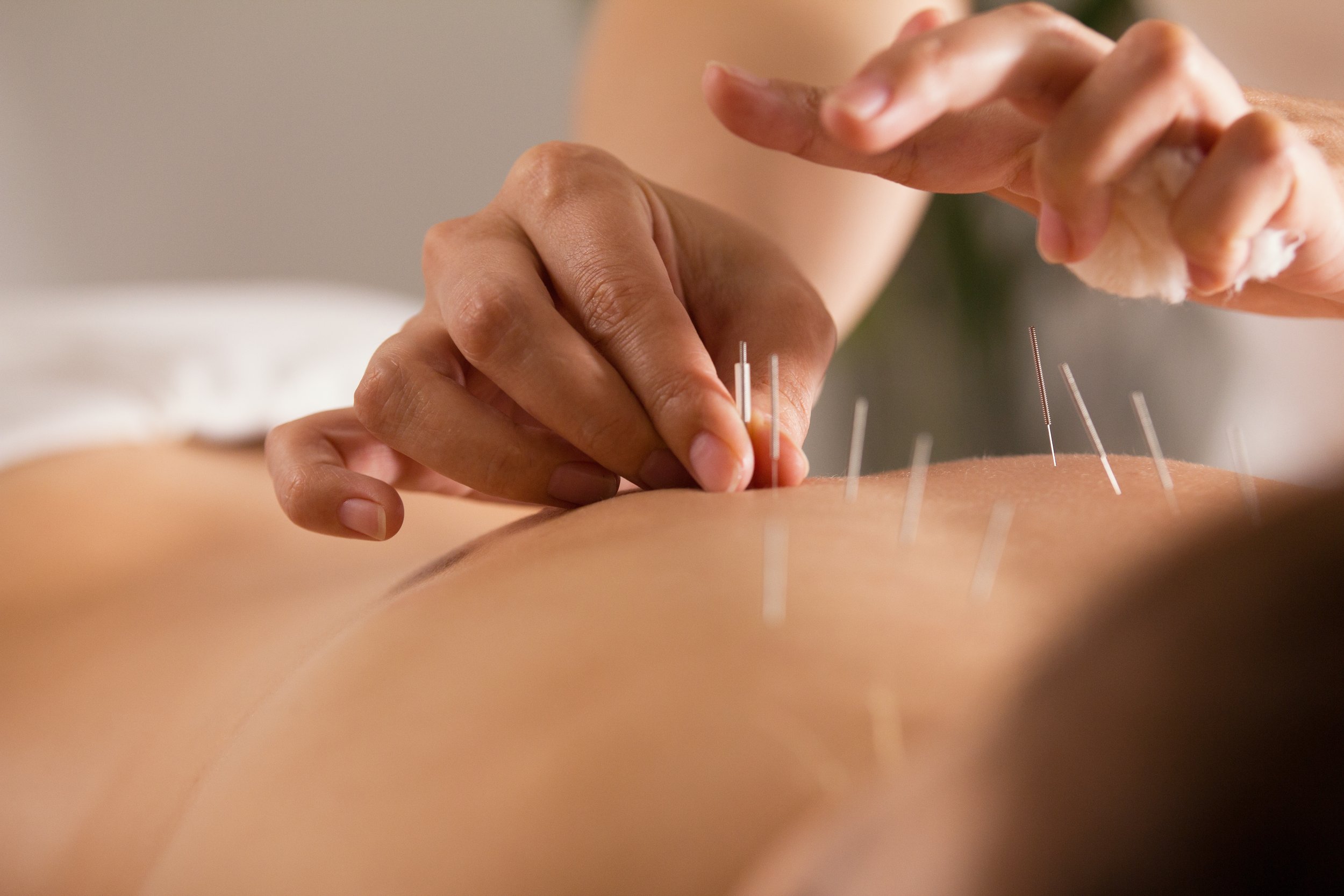
Acupuncture + TCM
Acupuncture + TCM
Traditional Chinese Medicine
Traditional Chinese Medicine (TCM) is a comprehensive system that includes various practices rooted in the ancient philosophy of Taoism and dating back over 5,000 years. Today, TCM is practiced alongside Western medicine in many hospitals and clinics throughout China. While TCM is widely accepted in East Asia, it is viewed as an alternative medical system in much of the Western world. TCM consists of five primary treatments: Acupuncture, Herbal Medicine, Moxibustion, Diet Therapy, and Tuina.
Acupuncture
Acupuncture is one of the oldest forms of medicine that is still practiced today. It involves the insertion of sterilized, single-use needles into specific points on the body to restore balance, health, and wellness. The process is virtually pain-free and can address multiple conditions at once. Acupuncture is effective for various mental, emotional, and physical complaints, often leading to deep relaxation and overall well-being.
Herbal Medicine
Herbal medicine utilizes plant-based remedies to tackle health issues and promote long-term wellness. TCM practitioners frequently recommend herbs in conjunction with acupuncture treatments to enhance their effects. While Acupuncture balances the body's energy and improves blood circulation, herbal medicine employs various bioactive compounds to resolve health problems and nourish the body for optimal health and vitality. We maintain a wide selection of herbs at our center for your convenience. If you are prescribed herbs during your treatment, you can purchase them directly from us to start your healing process immediately.
Moxibustion
Moxibustion involves burning a herb called Mugwort (Ai Ye) over specific acupuncture points, meridians, and muscle groups. This technique can significantly enhance the benefits of Acupuncture. It can also be performed independently to stimulate an acupuncture point or to achieve specific outcomes, such as assisting in turning a breastfed baby.
Diet Therapy
Diet therapy is a cornerstone of Traditional Chinese Medicine and is crucial in maintaining long-term health. It can address imbalances within the body, nourish organs and tissues, and bolster disease resistance. Food is considered medicine in TCM, making diet therapy essential for helping individuals achieve optimal health and vitality.
Tunia
Tuina, which translates to "push and grasp" in Mandarin, is an ancient hands-on therapy that promotes the smooth flow of Qi (vital energy) within the body. This therapy involves massage techniques, acupressure, and muscle manipulation to realign the body. It is both invigorating and relaxing, effectively reducing pain, improving range of motion, aiding digestion, lowering high blood pressure, and addressing nearly any TCM diagnosis.
“This has been my first acupuncture experience, and I love it! Both immediate and long-lasting results. My moods are brighter, and I feel a lot lighter in general. I look forward to exploring more of what it can do for me.”
Pain is one of the most common and well-known conditions that respond quickly to acupuncture treatments. It includes Back Pain (lower, middle, or upper), Dental Pain, Facial Pain, Headache, Joint pain, Menstrual Pain, Migraines, Neck Pain, and Post-operative Pain.
Other commonly treated conditions recognized by the World Health Organization (WHO) include:
Insomnia
Irritable Bowel Syndrome
Menopausal Syndromes
Menstrual Disorders
Migraine Headaches
Morning Sickness
Nausea and Vomiting
PMS
Repetitive Stress Injury
Sciatica
Sinusitis
Stress
Eye Disorders
Addiction
Adverse reactions to radiotherapy and/or chemotherapy
Arthritis
Allergies
Anxiety
Arthritis
Asthma
Bell's Palsy
Common Cold
Crohn's Disease, Colitis
Depression
Digestive Disorders
Stroke and/or Stroke Prevention
Sprains
Tendonitis
Tennis Elbow
TMJ
Urinary Disorders
Fibromyalgia
Hypertension
Hypotension
Infertility
Frozen Shoulder
FAQs
-
Acupuncture is part of a medical system that originated in China over 3,000 years ago. It involves the insertion of tiny, hair-thin needles at specific anatomical points. This process restores energy flow in the body, ensuring equilibrium and balance. When the energy flow is restored, blood and Qi circulate effectively, allowing the body to return to balance and heal naturally.
-
Qi (pronounced "chee") is the vital energy that flows through specific pathways known as meridians. Meridian-based Acupuncture is based on the understanding that the body is a dynamic system capable of self-regulation. Optimal health allows for smooth Qi and blood flow through the meridian system. However, daily life presents numerous challenges that can disrupt this natural balance. Physical injuries or stress can create muscle tension, forming persistent patterns. If these tension patterns aren't addressed, energy flow becomes blocked, like a dam obstructs water. This disruption can lead to pain, numbness, loss of function, or illness. Acupuncture helps release blocked energy and stimulates natural healing through various physiological systems. Modern research has shown that Acupuncture positively affects the nervous, endocrine, immune, cardiovascular, and digestive systems, helping to alleviate pain and improve sleep, digestive function, and overall well-being.
-
The insertion is relatively painless. Some needles are not felt, while others cause a slight pricking sensation that quickly dissipates. Be assured that your acupuncturist will adjust any needles to minimize discomfort. Overall, Acupuncture is a pleasant experience. After the needles are in and the patient is comfortable and warm, it is common for people to feel so relaxed that they take a nap.
-
The frequency and number of treatments differ from person to person. Some people experience dramatic relief in the first treatment. One to two treatments per week for several months may be recommended for complex or long-standing chronic conditions. For acute problems, usually fewer visits are required, usually eight to ten. Your acupuncturist will devise a treatment plan after a thorough consultation and initial treatment.
-
The World Health Organization (WHO) recognizes more than 40 conditions That can be treated with Acupuncture. However, it is essential to remember that Acupuncture treats the whole person, not just the condition. Even if your condition is not listed below, you may still benefit from Acupuncture.

